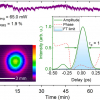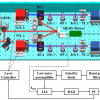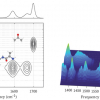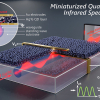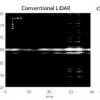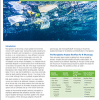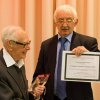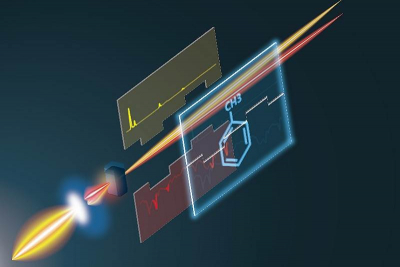
Researchers at the University of Tokyo have combined infrared and Raman spectroscopy into a new technique they call complementary vibrational spectroscopy. The complementary information available from Raman and infrared spectroscopies has been appreciated for some time, but in the technique they are combined and measured simultaneously.
Advances in ultrashort pulsed laser technology have made complementary vibrational spectroscopy possible. Inside the complementary vibrational spectrometer, a titanium-sapphire laser illuminates the sample with pulses of near infrared (NIR) light with a width of 10 fs. Before reaching the sample, the light is focused onto a crystal of gallium selenide. The crystal generates mid-infrared light pulses. The NIR and mid-infrared light pulses are then focused onto the sample, and the absorbed and scattered light waves are detected by photodetectors and converted simultaneously into Raman and infrared spectra.

Schematic of complementary vibrational spectroscopy. Complementary vibrational spectroscopy is based on a dual-modal Fourier-transform spectrometer with an ultrashort pulsed laser. The Raman measurement is made by Fourier-transform coherent Raman scattering spectroscopy. The infrared measurement is made by Fourier-transform infrared absorption spectroscopy with infrared light generated at a nonlinear crystal. Image by Takuro Ideguchi, originally published in DOI: 10.1038/s41467-019-12442-9
So far, researchers have tested their new technique on samples of pure chemicals commonly found in labs. They hope that the technique can be used to understand how molecules change shape in real time.
“Especially for biology, we use the term ‘label-free’ for molecular vibrational spectroscopy because it is non-invasive and we can identify molecules without attaching artificial fluorescent tags. We believe that complementary vibrational spectroscopy can be a unique and useful technique for molecular measurements”, said Associate Professor Takuro Ideguchi from the University of Tokyo Institute for Photon Science and Technology.
The new technique is reported in Nature Communications.









